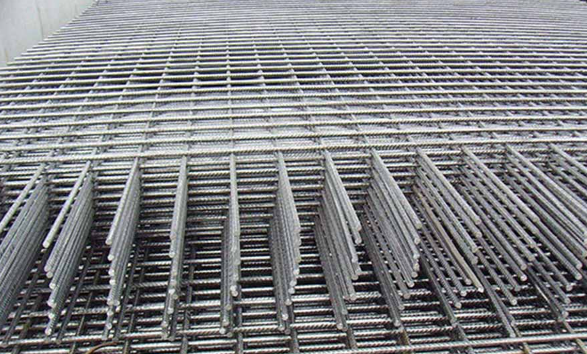Calculating reinforcing mesh for a construction project is a crucial step to ensure structural integrity and safety. Reinforcing mesh, commonly used in concrete slabs, foundations, walls, and other load-bearing structures, strengthens concrete by distributing weight and preventing cracks. To accurately calculate the amount of reinforcing mesh required for a project, you need to consider several factors such as the area to be covered, the type of mesh, and the specific reinforcement needs of the structure. This guide will explain how to calculate reinforcing mesh step by step.
1. Determine the Area to Be Reinforced
The first step in calculating reinforcing mesh is determining the total area that needs reinforcement. This is usually done by measuring the length and width of the concrete surface where the mesh will be placed. For example, if you’re working on a slab, measure the length and width of the slab in meters or feet.
For rectangular or square areas, the area (A) is calculated by multiplying the length (L) by the width (W):
Area (A) = Length (L) x Width (W)
If the area is irregular, break it down into smaller, measurable sections, calculate each section's area, and then add them together for the total area.

Heyou Special Mesh Reinforcements
2. Choose the Type of Reinforcing Mesh
Reinforcing mesh comes in different sizes and configurations depending on the application and structural requirements. The most common types of mesh include square mesh and rectangular mesh. Square mesh consists of equal spacing between the wires both horizontally and vertically, while rectangular mesh has varying spacing between the wires. Mesh sizes are generally expressed in millimeters (mm), such as 150 x 150 mm or 200 x 200 mm, indicating the distance between the wires.
It is also essential to consider the gauge or thickness of the wire used in the mesh. Thicker wires provide more reinforcement but may be more challenging to work with and can be more expensive. Depending on the structural load, consult design specifications or an engineer to determine the appropriate mesh size and wire gauge for your project.
3. Calculate the Number of Mesh Sheets Required
Once you know the area that needs to be reinforced and the type of mesh you’ll use, you can calculate the number of mesh sheets required. Reinforcing mesh is typically sold in standard-sized sheets, with common dimensions being 2.4 meters by 6 meters (or 8 feet by 20 feet).
To calculate how many mesh sheets you need, divide the total area of the surface to be reinforced by the area of a single mesh sheet:
Number of Sheets = Total Area to Be Reinforced / Area of One Mesh Sheet
For example, if your total area is 50 square meters and each mesh sheet covers 14.4 square meters (2.4 m x 6 m), you would need:
Number of Sheets = 50 / 14.4 ≈ 3.47 sheets
Since you can't purchase partial sheets, you’ll need to round up to the nearest whole number, meaning you would require 4 sheets of reinforcing mesh.
4. Consider Overlapping and Wastage
When installing reinforcing mesh, you must account for overlaps between sheets. Mesh sheets are usually overlapped by a certain amount (typically by one grid spacing, such as 150 mm or 200 mm) to ensure a continuous reinforcement layer. This overlap reduces the effective area that each sheet covers, meaning you’ll need slightly more mesh than the initial calculation might suggest.
To account for overlapping, add about 5-10% to your total mesh requirement. For example, if you calculated that you need 4 sheets, adding 10% would give you:
Total Sheets with Overlap = 4 x 1.10 = 4.4 sheets
In this case, you would need to purchase 5 sheets of mesh to account for the overlaps and ensure full coverage.
5. Calculate the Cost of Reinforcing Mesh
Once you’ve calculated the number of sheets required, the final step is determining the cost of the reinforcing mesh. Prices vary depending on the size of the mesh, the wire gauge, and the supplier. To calculate the total cost, multiply the number of sheets needed by the price per sheet:
Total Cost = Number of Sheets x Price per Sheet
For instance, if each mesh sheet costs $50 and you need 5 sheets, the total cost would be:
Total Cost = 5 x $50 = $250
FAQs About Reinforcing Mesh
Q: Can I cut reinforcing mesh to fit a specific area?
A: Yes, reinforcing mesh can be cut to fit irregularly shaped areas or around obstacles. Use a pair of bolt cutters or a grinder with a cutting disc to trim the mesh as needed.
Q: What type of mesh should I use for a driveway?
A: For driveways, a heavy-duty mesh with thicker wires (such as 6 mm or 8 mm) and smaller grid spacing (e.g., 150 mm x 150 mm) is recommended to provide adequate support for vehicle loads.
Q: How much overlap is required between mesh sheets?
A: Typically, mesh sheets are overlapped by one grid spacing (150 mm or 200 mm), but check local building codes or consult a structural engineer to confirm the exact requirements for your project.
In conclusion, calculating reinforcing mesh is a straightforward process involving measuring the area to be reinforced, selecting the appropriate type of mesh, and accounting for overlaps and wastage. By following these steps, you can ensure that you have the right amount of mesh for your construction project, providing strong and durable reinforcement for your concrete structures.







